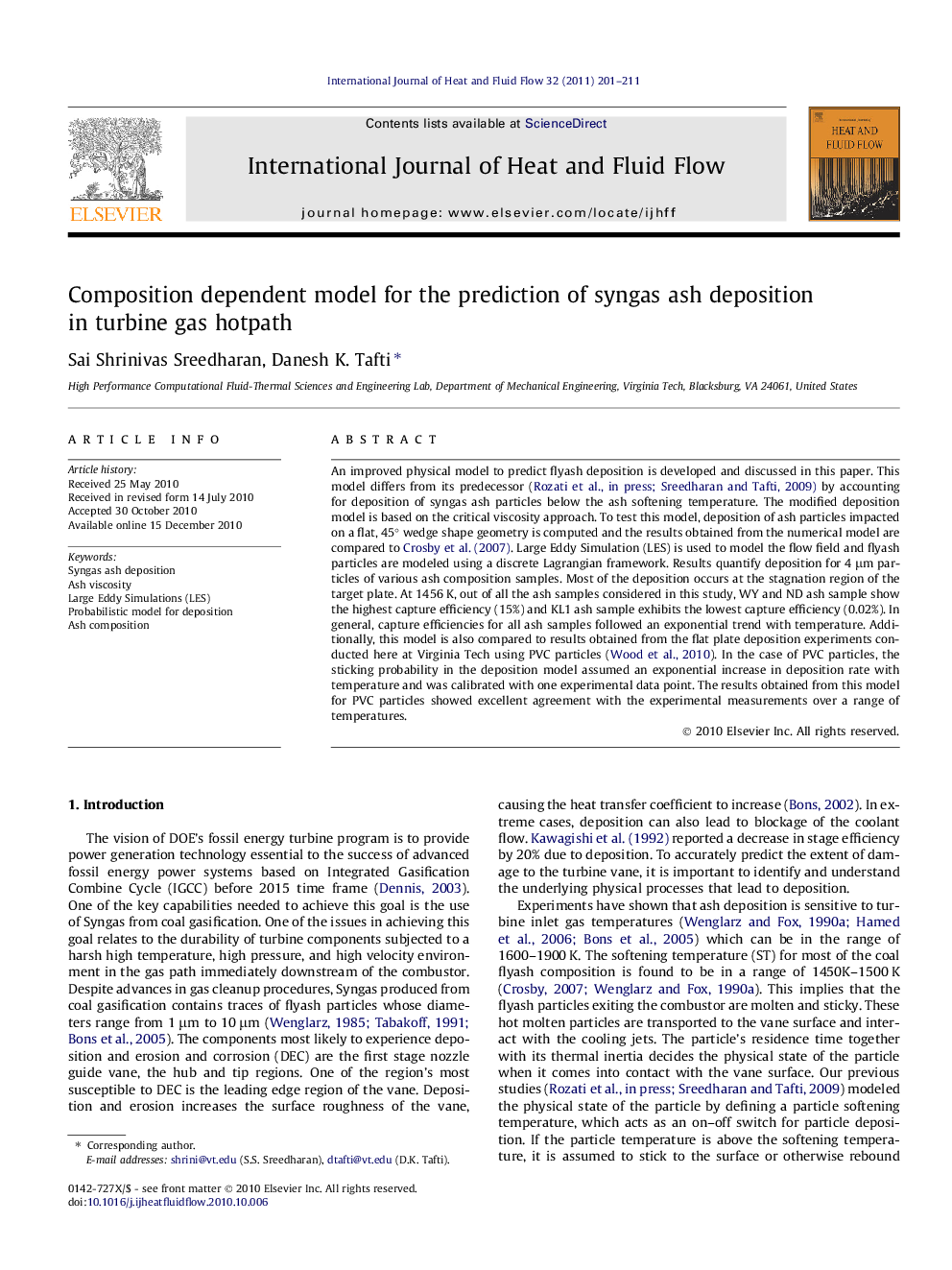| Article ID | Journal | Published Year | Pages | File Type |
|---|---|---|---|---|
| 655633 | International Journal of Heat and Fluid Flow | 2011 | 11 Pages |
An improved physical model to predict flyash deposition is developed and discussed in this paper. This model differs from its predecessor (Rozati et al., in press and Sreedharan and Tafti, 2009 by accounting for deposition of syngas ash particles below the ash softening temperature. The modified deposition model is based on the critical viscosity approach. To test this model, deposition of ash particles impacted on a flat, 45° wedge shape geometry is computed and the results obtained from the numerical model are compared to Crosby et al. (2007). Large Eddy Simulation (LES) is used to model the flow field and flyash particles are modeled using a discrete Lagrangian framework. Results quantify deposition for 4 μm particles of various ash composition samples. Most of the deposition occurs at the stagnation region of the target plate. At 1456 K, out of all the ash samples considered in this study, WY and ND ash sample show the highest capture efficiency (15%) and KL1 ash sample exhibits the lowest capture efficiency (0.02%). In general, capture efficiencies for all ash samples followed an exponential trend with temperature. Additionally, this model is also compared to results obtained from the flat plate deposition experiments conducted here at Virginia Tech using PVC particles (Wood et al., 2010). In the case of PVC particles, the sticking probability in the deposition model assumed an exponential increase in deposition rate with temperature and was calibrated with one experimental data point. The results obtained from this model for PVC particles showed excellent agreement with the experimental measurements over a range of temperatures.
